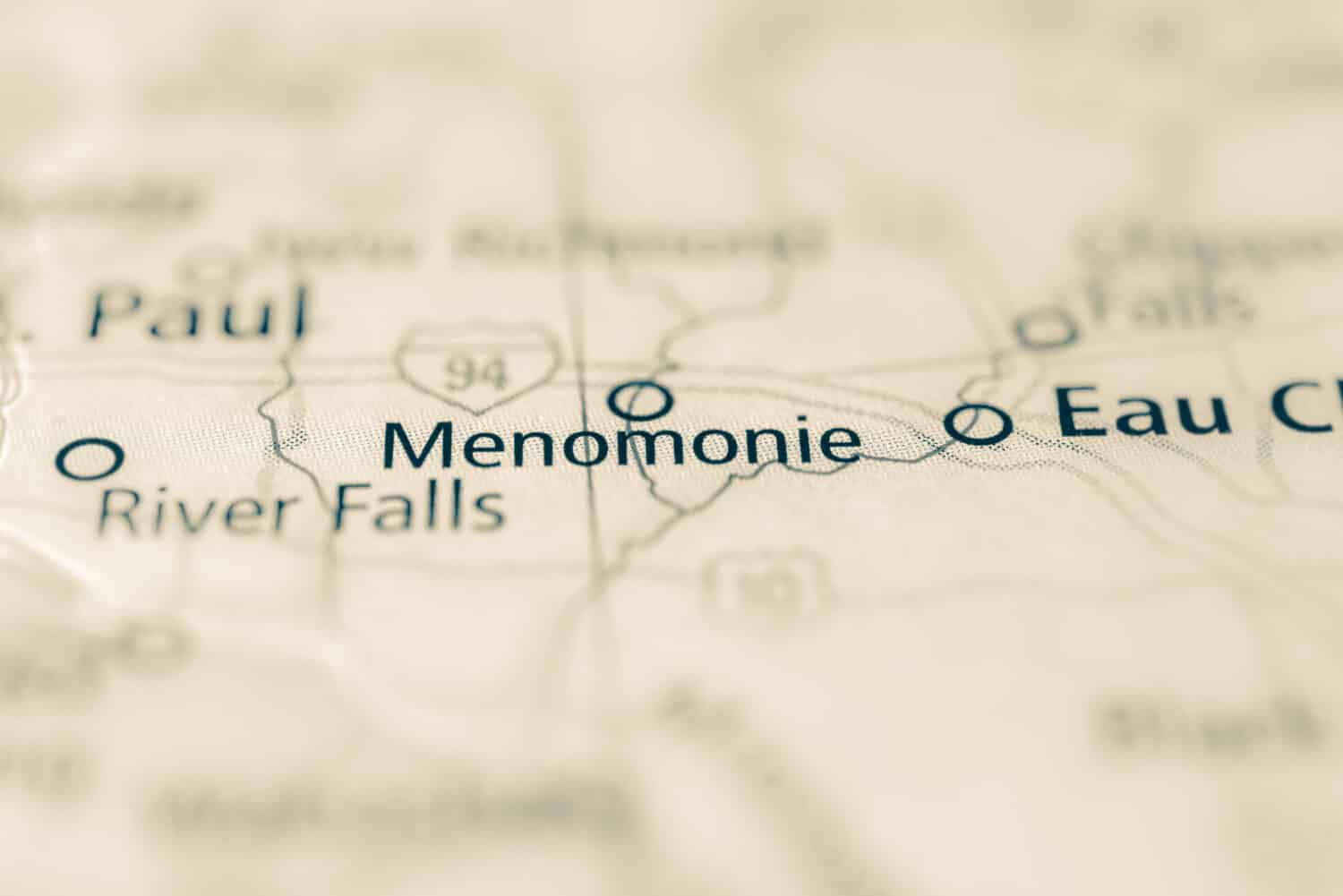Meteorites and asteroids have slammed into the Earth since the planet’s formation, and North America is no exception. Although the passage of millions of years may help hide the impact sites, scientists have found impact craters across the country. Several impacts have occurred in Wisconsin over the years. Learn about the biggest impact crater in Wisconsin and find out how big it is, how it was found, and what caused the crater!
What Was the Biggest Impact Crater in Wisconsin?

Menomonie is the closest city to the Rock Elm Disturbance.
©Tudoran Andrei/Shutterstock.com
The biggest impact crater in Wisconsin is the Rock Elm Disturbance. The Rock Elm Disturbance is an impact crater located near the town of Rock Elm, Wisconsin. This impact crater is located in the southwest portion of the state. The disturbance measures about 4 miles in diameter. Scientists believe that the meteorite that impacted the region was about 560 feet in diameter and struck the area at a speed of about 67,000 mph.
The center of the crater is a raised area that measures about 0.5 miles wide and 1.5 miles long. The raised center at this site confirms that a significant impact event occurred. At that site, two different kinds of rock that are lower in the geological stratum were found higher up than anywhere else in the area.
However, this isn’t the type of impact crater where a person can stand at one edge and gaze down into a bowl-shaped depression. Instead, much of this crater was filled in by sediment and rocks over hundreds of millions of years.
The site was first discovered in 1942 as a result of geologic mapping in the area, and it’s listed as partially exposed and eroded. Some parts of the impact crater’s edge can be seen at the Nugget Lake County Park. Also, some outcroppings of Mt. Simon sandstone are found in places like Pierce County, Wisconsin.
How Do We Know the Rock Elm Disturbance Was an Impact Crater?
Undergraduate students from the University of Puerto Rico discovered the most significant evidence suggesting that the Rock Elm Disturbance was a meteorite impact in 2013.
During a trip to the biggest impact crater in Wisconsin, the students found reidite, a mineral that has only been found at three other places on Earth. Those places include the Nordlinger Ries crater in Germany, the Xiuyan crater in China, and the Chesapeake Bay impact crater in Virginia.
Reidite is a dense form of zircon that is only formed under incredible pressure and high temperatures, such as those found during an extraterrestrial impact. That evidence confirms the fact that the Rock Elm Disturbance was caused by a meteorite.
When Was the Rock Elm Disturbance Formed?
The Rock Elm Disturbance was formed between 455 and 430 million years ago. That means the impact crater was formed during the Middle Ordovician Period. Scientists believe that several meteorite impacts struck the region during the same period. Meteorites struck in Decorah, Iowa and the area around Lake Superior.
The Closest City to the Impact Crater
The closest city to the Rock Elm Disturbance is Menomonie, Wisconsin. This city is located in Dunn County. It is roughly 25 miles away from the location of the impact crater. The closest town to the Rock Elm Disturbance is called Rock Elm.
What Animals Live Near the Crater?

White-tailed deer roam near Rock Elm.
©Tom Reichner/Shutterstock.com
Wisconsin is home to a wide assortment of animals, including many that live near the biggest impact crater in Wisconsin. These days, much of the impact crater is farmland, fields, and forests. Thus, we can assume that the majority of the same animals found in such areas in the state live within the region.
For example, farm animals such as cows, horses, goats, and chickens are probably common in the region. Moreover, wild animals also live in the area. These animals include white-tailed deer, squirrels, raccoons, groundhogs, opossums, and more.
Much of the area that was part of the original impact site is now private land. That makes it hard for most people to access the area to see the crater’s remnants as well as the animals that live within the area.
What Was the Biggest Impact Crater in the United States?

The Chesapeake Bay was the site of an enormous meteorite impact.
©Paul’s Photo Shop/Shutterstock.com
The biggest impact crater in the United States is the Chesapeake Bay impact crater. The impact crater is about 25 miles in diameter and about 0.8 miles deep. Scientists believe that the impactor had a diameter of about 1.9 miles.
Unlike the biggest impact crater in Wisconsin, the Chesapeake Bay impact crater was formed only about 35 million years ago. Scientists found evidence of the impact structure in 1994. However, the full size of the crater was not discovered until 1999. A group from the United States Geological Survey and the Virginia Department of Environmental Quality took several core samples of the region and found out just how large the crater was!
The impact was devastating to the region when it occurred. Scientists have found ejecta from the site in far-flung places like Atlantic City, New Jersey. That’s over 150 miles away from the site.
The biggest impact crater in Wisconsin is not much to look at these days unless a person knows what they’re seeking out. The four-mile-wide crater was a significant blow to the area. Yet, it does not measure up to the larger craters in the country or the world. The Chesapeake Bay impact crater is six times the size of the Rock Elm crater. Also, the Vredefort Crater in South Africa was about almost eight times larger than the Chesapeake Crater at the time it was formed!
Where Is Rock Elm Disturbance Located on a Map?
Many meteorites and asteroids hit the earth, and have for millennia. For the state of Wisconsin, the Rock Elm Disturbance is an impact crater located near the town of Rock Elm, Wisconsin, in the southwest portion of the state. The disturbance measures about 4 miles in diameter.
The photo featured at the top of this post is © Triff/Shutterstock.com
Thank you for reading! Have some feedback for us? Contact the AZ Animals editorial team.






